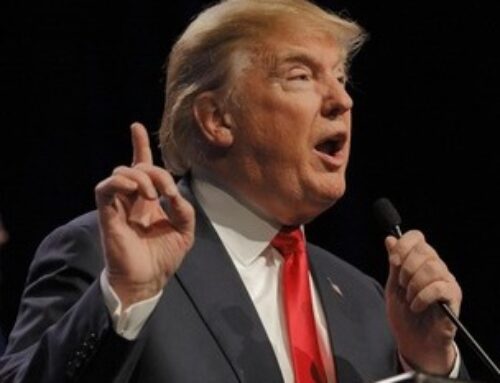 A number of authors have written probing criticisms of modern journalism, notably Bernard Goldberg, James Fallows, and Bob Kohn. Now award-winning journalist Sharyl Attkisson adds The Smear, an insightful account of the most recent, shameful, and dangerous episode in journalism’s decline.
A number of authors have written probing criticisms of modern journalism, notably Bernard Goldberg, James Fallows, and Bob Kohn. Now award-winning journalist Sharyl Attkisson adds The Smear, an insightful account of the most recent, shameful, and dangerous episode in journalism’s decline.
What the public receives as news today, she explains, is in fact propaganda crafted to “control what you see, what you think, and how you vote.” Although conservative as well as liberal operatives employ it, the latter are more adept at doing so. “The Clintons,” for example, “elevated the smear to an art form and pioneered new methods: using the media to target enemies and to undermine uncooperative journalists.”
To confuse their target audiences, Attkisson claims, liberal smear merchants often disguise themselves as watchdogs, public relations people, and representatives of non-profit organizations. And the most effective operatives are not only able to plant ideas in journalists’ minds, but to make them believe they conceived them.
The propaganda is well organized and far-reaching. According to Attkisson, Media Matters has “hundreds of reporters on its email list.” Another Political Action Committee, Correct the Record, sent out “80 sets of talking points . . . and briefings on topical issues [supporting Clinton] to 372 surrogates including influential and frequent pundits on broadcast and cable news,” as well as “’media advisories’ and ‘talking points’ to 960 members of the national media and 10,756 regional reporters in 28 states,” and to “369 television producers and bookers.” These resulted in stories in many news outlets, including national ones.
Before the 2016 Republican nomination was decided, Attkisson explains, the media were merely used by the operatives, in many cases unwittingly. Once Trump won the nomination, however, the media became “formidable smear artists in their own right.” Throughout the book, Attkisson identifies and documents the numerous methods they employ, which I would group as follows:
Misrepresentation: For example, calling Trump’s opposition to illegal immigration anti-immigrant. Also, labeling virtually everything he says as “controversial,” even when it is factual.
Eliminating the opposition: Using social media, advertising, and letters to editors to create the false impression that masses of people disapprove of their opponents, then using that false impression to demand that editors and publishers blacklist the opponents’ work or fire them. Also, crafting opinion polls that portray candidates as the operators wish them portrayed, regardless of the facts. Here Attkisson cites 2016 polls that were “designed to give the impression of widespread opposition to Trump” when, as the election proved, there was widespread approval.
Packing audiences: On the one hand, paying people to attend their candidates’ campaign appearances and town hall meetings and loudly cheer and applaud. On the other, to attend opponent’s gatherings and jeer, heckle, and disrupt. Attkisson cites a case in which a Democratic operative was caught on camera explaining “how party officials had trained and organized agents to attend Trump rallies and then bait Trump supporters into lashing out, knowing the media would smear Trump when it happened.”
Suppressing opposing points of view: This is arguably the worst violation of the journalistic code and the most damaging offense against the public. The fundamental purpose of journalism is to inform the public of what is being said and done. This method prevents the public from learning what operatives do not want them to learn.
Suppressing is not a new method for journalists, of course, nor is Attkisson the first to call attention to it.
A noteworthy case of suppression occurred to Tammy Bruce, once president of the Los Angeles Chapter of the National Organization for Women (NOW), in the late 1990s. As she explains in Thought Police (2001), for ten years as a feminist activist she had no difficulty getting her unapologetically liberal ideas published in the Los Angeles Times. Whatever she submitted was accepted without question. Then she became disturbed at what she perceived to be the unfair treatment of conservative Dr. Laura Schlessinger by her fellow liberals, so she composed a short commentary expressing that view. The Times held it for three weeks, and when she called to ask what was happening, the editor explained they had decided not to publish it because it was on the “wrong” side of the issue. She then withdrew the article and submitted it to the New York Times, where it was edited in such a way that her pro-Dr. Laura view became an anti-Dr. Laura view. (She refused to accept the changes and withdrew the letter.)
An even more timely example of journalistic suppression is the experience Harvard Law Professor Alan Dershowitz had at roughly the same time The Smear was published. Like Tammy Bruce, his contributions to the New York Times had previously been warmly welcomed, and not surprisingly—he is one of the most respected authorities on the law in general and the Constitution in particular, and also a liberal. In this case, however, his column expressed the view that President Trump likely did not attempt to obstruct justice in his firing of former FBI Director James Comey. Not only did the editors decide not to publish his commentary, they did not even respond to his follow-up inquiry about it. His conclusion: “I really do think The New York Times does not want its readers to hear an alternative point of view on the issue of whether or not the Trump administration is committing crimes.”
Before discussing Attkisson’s book further, an important aside is in order. As candidate and later as president, Donald Trump was demonized for denouncing what he called “Fake News” and protesting that the political system was “rigged.” Commentators even suggested that such statements indicated that he was insane or at least suffering from strange delusions. Attkisson’s revelations suggest not only that was Trump sane, and even insightful, but that, given that the fakeness of news was rather obvious,his detractors were suffering from the defense mechanism of “denial.”
It would be difficult to overstate the harm done by the journalistic practices Attkisson describes in The Smear. They prevent valuable perspectives from being reported, enable false narratives to replace accurate ones, and demonize and defame honorable individuals who could contribute greatly to public discourse. By these means, political operatives control the information the public receives, the way they think about issues, the choices they make in elections, and ultimately the policies that govern their lives and the fate of the nation.
Overcoming the effects of the problem Attkisson has identified will not be easy for two reasons. One is that at least half of the public have been fed fake news for so long that they have formed firm beliefs about many subjects, especially political ones. In order for them to reconsider those beliefs, they must be willing to admit the possibility that they have been deceived and that the views they have embraced as their own are mistaken. The human ego being what it is, that admission will be difficult.
The other reason is that the very operatives Attkisson identifies are likely to exert powerful pressure to prevent her message from getting the attention required to create public awareness. The communications media can refuse to review her book or choose reviewers that will dismiss its contents as “poorly researched” or “exaggerated” and Attkisson herself as “controversial” or even “right-wing.” (All these claims are false.) The media can also prevent her from being interviewed on talk shows and advise their commentators not to mention the book or to do so demeaningly.
For The Smear to receive the attention it deserves, informed readers must promote it among their friends and associates, and not only those who will be receptive to its message, but also, and more importantly, those who may not be.
Copyright © 2017 by Vincent Ryan Ruggiero. All rights reserved.


